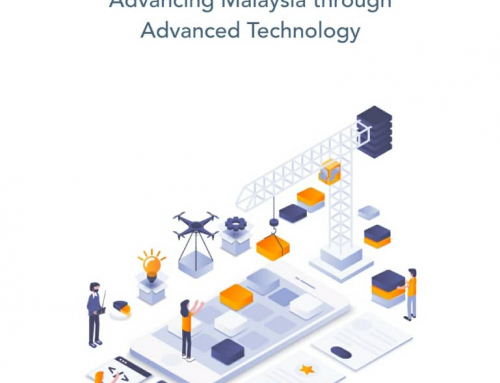To diversify away from oil revenue dependence, a number of countries are encouraging further industrialization, manufacturing and innovation within their economies. This will, among others, lead to higher consumption of raw materials inputs in these countries. If we view waste a resource, it is also the right time to encourage the development of a circular economy as a part of, and to support, this diversification strategy. Circular economy, simply put, is where outputs arising from economic activity, can also serve as inputs required by other economic activities. This way, waste is dramatically reduced or even eliminated. Doing so makes both environment and financial sense.
Boosting a country’s growth through a circular economy – Indicative financial calculations
Waste contains multiple streams of material with recycling potential. As each recovered material stream flows further along the processing and re-manufacturing cycle, it generates incremental revenue. By developing a circular economy, countries are able to capture this additional revenue. Let’s use an example of PET bottles. It’s a simplistic calculation but it demonstrates the impact. If PET bottles are just collected and traded, the sale price is around USD$100 per ton. If the same materials are processed further, and used in bottle to bottle recycling, the value rises to around USD$600 per ton – a difference of USD$500 per ton. Assume 1 million tons of PET is recovered a year, the potential revenue for an economy is USD$600 million. This represents a USD$500 million increase , compared to USD$100 million for collection and trading. Add in a low multiplier effect of just 1.5 times, and the impact on the country’s economy rises to USD$900 million. Add in the hidden transactional cost , environmental savings and technology benefits, and the total financial impact is over USD$1 billion. It’s 10 times more than the USD$100 million from PET bottle collection and trading. The same principle can be applied to almost all recyclables recovered from waste stream, such as tyres, construction and demolition waste, wood waste etc. Aggregate all of these together, and the potential positive financial impact to an economy rises to billions of USD$.
Using tipping fee revenue to jump start the process
One of the challenges facing the region are low tipping fees. Tipping fees refer to the disposal or treatment charges incurred as part of the post collection process in waste management. Fees that are too low or too high could have a negative impact on encouraging the development of a sustainable circular economy. If fees are too low, there is insufficient incentive for waste producers to segregate recyclables. It will also discourage capital investment in building recovery and recycling facilities (RRFs). Too high, and the recycler has limited incentive to invest in efficiency, innovation and research and development ensure his products cost the same or less than virgin materials, all things being equal.
Finding the right fees is a tricky exercise for regulators as they have to build and test holistic financial, economic and social impact models. Waste producers will argue that higher tipping fees will increase the cost of doing business. My argument is that waste is usually a small part of a company’s operating cost, and if the producer implements sustainability practices, a business’s waste costs could actually reduce, despite an increase in tipping fees. On the other hand, there are the government entities who are happy to implement higher tipping fees and treat this as a new revenue line to cover other budget shortfalls. This, too ,is not correct. The revenue should be used to encourage the development of a circular economy. This could be through a partial allocation to a fund to pioneer new recycling technologies or to provide “gap “financing of value add RRF’s. Revenue could also be used to fund development and marketing of recycling materials specification standards. Such specifications would provide confidence and comfort levels to various users that products made from recycled material are equally good, if not better, than products made from virgin materials. This would go a long way to create market demand for recycled products.
Will a Waste to Energy plant affect the development of a circular economy?
Producing renewable energy from waste is technically a component of a circular economy. Generally, waste to energy plants (WTEP) and RRF’s can co-exist. Together, they can jointly reinforce the growth of a circular economy. This is because it is impossible to recover 100% recyclables disposed in waste. Also there will be components of a waste stream that cannot be recycled. Converting these back into energy to supply houses and industries ensures these materials are still useful,compared to being disposed in a landfill. However, I write, generally for WTEP. This is because it depends on the technology used. Incineration, for example, is very safe and can treat a wide variety of waste, and is easy to co-exist with RRF’s in a circular economy. Other WTEP technologies may require a specific input or blend. In such cases, they may be a conflict, involving feedstock quality and quantity between the WTEP’s and RRF’s, and these conflicts may affect circular economy development. It is, therefore, important to choose WTEP technology carefully.
The time is now!
It will take 3 to 5 years to develop a strong and sustainable circular economy. This is about the same timeline for the other current economic diversification activities, mentioned above, to develop. There is, therefore, now a unique opportunity to integrate all of these new diversification activities. This will provide a long term sustainable base for circular economy activities. Leaving aside job creation opportunities, there are also other advantages. For example, today, commodity prices are low. But they will go up. And when they do, countries with circular economies will have a competitive advantage when it comes to raw material inputs. As explained above, implementing a circular economy adds billions of USD in a country’s economic activity. Given the advantages, let’s start now and generate real Wealth from Waste, and save the environment at the same time. It’s a Win Win partnership for our planet and it’s people.






